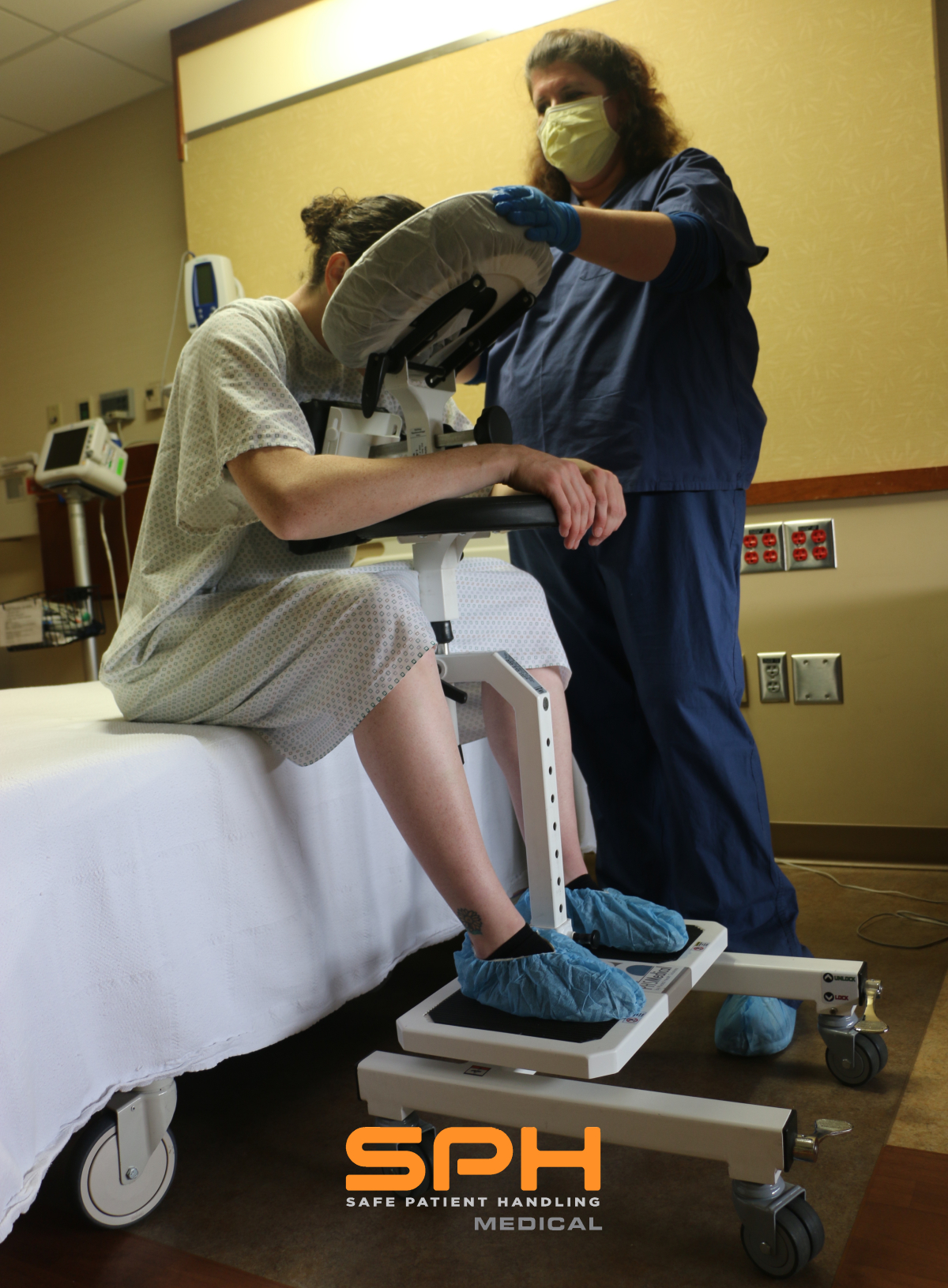Patient and caregiver comfort and safety are at stake when performing spinal blocks before ortho surgeries and epidural placements for expectant mothers. These tasks are so common place in the Pre-Op area of the surgery department and on labor and delivery floors that nursing staff and nursing leadership often don’t consider the risk to their staff and patients. Safety can be dramatically improved by using the original epidural positioning device. The device provides epidural safety by allowing nurses to position their patients restfully and properly, encouraging lumbar, cervical, and thoracic flexion.
What is an Epidural Positioning Chair?
Epidural positioning chairs came into existence about two decades ago. Invented by a renowned anesthesiologist, these chairs took some inspiration from modern-day massage chairs but have been designed to work in the clinical environment. They’re created to offer stability, comfort, and accurate positioning in mind. The chairs are used to ensure correct patient positioning during many different types of procedures. The chairs are widely used to position patients of size and obstetrics, increasing their comfort and safety. The EPD or epidural positioner offers adjustable arm supports, a tilting and adjustable cushion for the face and head, and chest cushion that provides support and promotes the optimal flexion. For patients using the EPD, their body position is stabilized which minimizes risk of errors by the anesthesiologist. We’re finding new uses for the EPD in other areas of the hospital to support patients like the imaging department for Thoracentesis. The adjustability of the EPD makes it adaptable to many different healthcare settings.
Where Is Epidural Positioning Device Used?
The device is primarily utilized in labor and delivery unit, pain centers, operating rooms, labor rooms, and surgery department units. The device has a variety of uses in the surgery department and also the device is used in medical centers where spinal and epidurals are conducted. The EPD is the revolutionary alternative to manual positioning, which offers less stability, increases complication risks and puts staff at risk when trying to support or hold a patient in position. The benefits of the device in departments such as labor and delivery unit where is often utilized have been measurable. The busy surgical department uses the device to prep patients for common ortho surgeries with spinal blocks, while nurses on the labor and delivery unit use it to position patients for epidural placement. As mentioned above, the EPD has also found its way over to the imaging department where Ultrasound technicians are responsible for prepping patients for Thoracentesis. The EPD is quickly becoming the standard of care in all three of these hospital departments.
What Are the Benefits of Epidural Safety?
Caregivers and nurses use epidural chairs in preoperative environments to position patients properly and seamlessly position their bodies steadily and comfortably. Unlike the manual task of positioning patients for a spinal block or epidural, which require holding stools or patients steadily so they don’t move an inch which clearly increases risk of injury to the caregiver, an epidural chair is comfortable and ergonomic. With these chairs, the risk of musculoskeletal injuries is significantly reduced by allowing the EPD to provide the support, not the nurse. The following are the main benefits of using epidural positioning devices for epidural positioning.
- The epidural chairs minimize strains, sprains and risk of musculoskeletal injuries
- They encourage thoracic, lumbar, and cervical flexion, maintaining a stable and comfortable position
- It maximizes patient comfort while some safe distancing for staff
- Correct positioning increases the potential for needle placement accuracy, minimizing the risk of complications.
- The EPD improves patient confidence, security, and satisfaction
Features of the Epidural Positioning Chair – the EPD
When considering the epidural positioning chair, you should consider the following features
- Well-designed and portable with wheels that easily lock in place
- A comfortable and adjustable face rest designed to attain and maintain perfect cervical flexion
- Ergonomically designed armrest to offer enough stability and comfort to a patients’ arms
- Lightweight and stable design
- Adjustable and relaxingly designed footrest
- 600lb weight capacity
- Adjustable torso support to offer quality thoracic and lumbar flexion
The possible applications of epidural positioning chairs and the benefits the EPD can deliver to a healthcare facility are numerous. Patient and staff injuries and high risk of complications have been common issues medical facilities deal with regularly. With these efficient and effective positioning devices in place, the staff injury cases have been virtually eliminated while patient complications have significantly reduced. For the industry leading EPD used for Epidurals, spinal blocks and thoracentesis, along with any other safe patient handling to reduce workplace injuries, healthcare facilities must contact SPH Medical.



